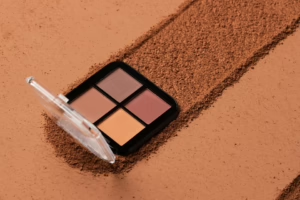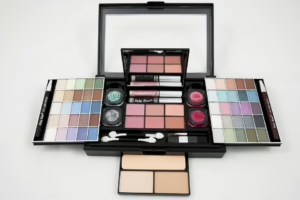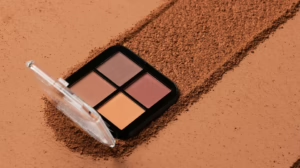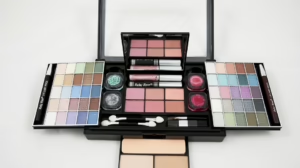How to Choose the Right Foundation for Your Skin Type: A Comprehensive Guide
Choosing the right foundation for your skin type can feel like navigating a complex maze filled with endless options, textures, and finishes. A well-matched foundation can enhance your natural beauty, even out your skin tone, and provide a perfect base for the rest of your makeup. This guide will help you understand the various foundation types and formulations available and how to select the ideal one based on your unique skin characteristics.
Understanding Your Skin Type
1. Oily Skin
Oily skin is characterized by excess oil production, leading to a shiny complexion, enlarged pores, and a tendency to develop acne. People with oily skin often struggle with foundation slipping or fading throughout the day.
Recommended Foundation Types:
- Matte Foundations: These foundations help absorb excess oil and provide a long-lasting finish. Look for products labeled “oil-free” or “matte finish.”
- Powder Foundations: A great option for oily skin, powder foundations can absorb oil and help control shine.
Key Ingredients to Look For:
- Salicylic Acid: This can help prevent acne breakouts.
- Kaolin Clay or Charcoal: These ingredients absorb oil and provide a matte finish.
2. Dry Skin
Dry skin often feels tight and can appear flaky. People with dry skin may find that foundations can cling to dry patches, making them look even drier.
Recommended Foundation Types:
- Hydrating Liquid Foundations: These foundations are formulated to provide moisture and are often enriched with hydrating ingredients.
- Cream Foundations: Creamy foundations tend to have a thicker consistency and provide better coverage and hydration for dry skin.
Key Ingredients to Look For:
- Hyaluronic Acid: This ingredient helps to retain moisture and plump the skin.
- Glycerin: Acts as a humectant, attracting moisture to the skin.
3. Combination Skin
Combination skin displays characteristics of both oily and dry skin, often showing an oily T-zone (forehead, nose, and chin) while the cheeks remain dry. This skin type requires a balanced foundation that addresses both dryness and oiliness.
Recommended Foundation Types:
- Satin Finish Foundations: These foundations strike a good balance, providing hydration without excessive shine.
- Stick Foundations: Easy to apply, these can be blended to suit different areas of the face.
Key Ingredients to Look For:
- Natural Oils like Jojoba or Argan: These provide hydration without making the skin feel greasy.
- Lightweight Moisturizers: Help balance dryness without adding too much oil.
4. Sensitive Skin
Sensitive skin can react poorly to certain ingredients, leading to redness, irritation, or allergic reactions. It’s essential to choose foundations that are gentle and formulated for sensitive skin.
Recommended Foundation Types:
- Mineral Foundations: These are often free from irritating chemicals and can help calm the skin.
- Hypoallergenic Liquid Foundations: Look for products that are fragrance-free and non-comedogenic.
Key Ingredients to Look For:
- Zinc Oxide or Titanium Dioxide: These mineral ingredients can soothe and protect the skin from irritation.
- Aloe Vera or Chamomile: Known for their calming properties, these ingredients can help reduce redness.
Assessing Coverage Needs
Once you’ve identified your skin type, the next step is to determine the level of coverage you desire. Foundations come in various coverage levels: sheer, medium, and full.
1. Sheer Coverage
Ideal for those with relatively clear skin who want a light, natural look. Sheer coverage foundations allow the skin to breathe while providing just enough tint to even out the complexion.
Best For: Daily wear, minimal makeup looks, or mature skin.
2. Medium Coverage
Offers more coverage than sheer foundations but still allows some skin imperfections to peek through. Medium coverage is versatile and suits most makeup wearers.
Best For: For those with some skin imperfections but who prefer a more natural look than full coverage.
3. Full Coverage
Designed to conceal even the most significant skin imperfections, full coverage foundations provide a polished finish. They are ideal for special occasions or when you need long-lasting wear.
Best For: Those with significant blemishes, scars, or uneven skin tones.
Choosing the Right Finish
The finish of your foundation can dramatically affect the overall look. Here’s a breakdown of the most common finishes:
1. Matte Finish
Matte foundations offer a flat, shine-free appearance. They are typically best for oily skin types but can work well for anyone looking for a long-lasting, no-shine finish.
2. Dewy Finish
Dewy foundations impart a luminous glow, making them excellent for dry or mature skin types. This finish helps to create a youthful appearance, reflecting light and creating a healthy glow.
3. Satin Finish
Satin finishes fall between matte and dewy, offering a natural appearance without excessive shine. They are versatile and can suit various skin types.
Selecting Your Shade
Finding the perfect shade is a critical step in choosing a foundation. Here are some tips to help you select the right color:
1. Test in Natural Light
Always test foundation shades in natural light to ensure an accurate match. Apply a small amount to your jawline and observe it in different lighting to see how it interacts with your natural skin tone.
2. Undertones Matter
Identifying your undertone can help you select a shade that complements your skin:
- Warm Undertones: Look for shades with yellow, golden, or peachy tones.
- Cool Undertones: Choose shades with pink, red, or blue tones.
- Neutral Undertones: If you have a mix, opt for shades that balance both warm and cool tones.
3. Consider Seasonal Changes
Your skin tone can change with the seasons. You may be fairer in winter and darker in summer, so consider having two shades on hand to accommodate these changes.
Application Techniques
How you apply your foundation can greatly affect its finish and longevity. Here are some application techniques suited to different formulas:
1. Liquid Foundations
- Tools: Use a damp beauty sponge or a foundation brush for a seamless application.
- Technique: Start in the center of the face and blend outward for an even coverage.
2. Powder Foundations
- Tools: A fluffy brush is ideal for a light application, while a dense brush can provide more coverage.
- Technique: Lightly dust the powder across the face, focusing on areas needing coverage.
3. Cream Foundations
- Tools: A stippling brush or your fingers can both work well.
- Technique: Start with a small amount and build coverage as needed, blending well for a natural finish.
Pro Tips for Long-Lasting Wear
-
Prep Your Skin: Always start with a clean and moisturized face. For oily skin, consider a mattifying primer, while dry skin can benefit from a hydrating primer.
-
Set with Powder: If using liquid foundations, especially in humid environments, set your foundation with a translucent powder to prevent fading and shine.
- Use a Setting Spray: A good setting spray can lock in your makeup and extend wear, particularly important for longer days or special occasions.
Conclusion
Choosing the right foundation is essential for achieving a flawless complexion that complements your unique skin type and personal style. By understanding your skin type, determining your coverage needs, and selecting the appropriate finish, you’ll be better equipped to make informed choices. Don’t hesitate to experiment with different products and techniques until you find what works best for you. Remember, the perfect foundation should enhance your natural beauty, providing you with the confidence to shine.
When selecting your foundation, consider the seasonality, skin reactions, and don’t forget to test colors in natural light for the most accurate match. Happy foundation hunting!
[Modern Footnote Source]: For more detailed information on skincare and makeup products, refer to the latest cosmetic studies and dermatology resources. Consult beauty professionals and consider online tutorials for practical advice tailored to your unique skin needs.

























Add Comment